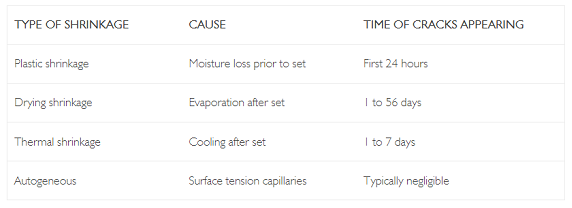How to keep your concrete slabs from shrinkage?
What is Concrete shrinkage?
If a concrete slab has been installed properly it is incredibly durable with the ability to retain heat making it a great option for floors, driveways, pools, paths and more. Shrinkage is something that occurs when there is a decrease in concrete length or volume there are chemical changes that affects the durability of the slab as a result of movement of the slab. The resulting shrinkage causes susceptibility to cracking in the slab.
Types of shrinkage
There are several types of shrinkage that can occur.
– Plastic Shrinkage
– Chemical shrinkage
– Autogenous shrinkage
– Drying shrinkage
– Thermal shrinkage
– Carbonation shrinkage

What are the causes of concrete shrinkage?
⦁ Environmental conditions – During very hot and windy days the surface of the concrete may lose moisture faster than the concrete can tolerate and therefore cause surface shrinkage also known as plastic shrinkage cracking.
⦁ Curing – If a concrete slab does not cure evenly it is known as thermal shrinkage. Thermal shrinkage occurs when the top of the concrete is drying faster than the bottom. This is common when concrete poured on surfaces has not received enough heat from beneath the slab.
⦁ Water content – The loss of moisture from concrete after it hardens occurs can cause drying shrinkage caused from loss of absorbed water from the hydrated cement paste.
⦁ Presence of excessive fines in aggregates –
⦁ Cement content – The composition of cement used for concrete and mortar has some effect on shrinkage. The rate of shrinkage will increase with the increase in the cement content.
